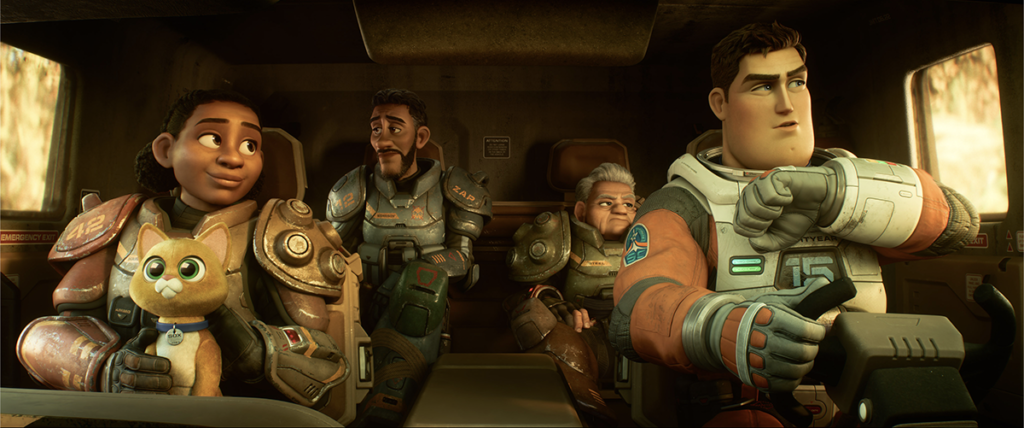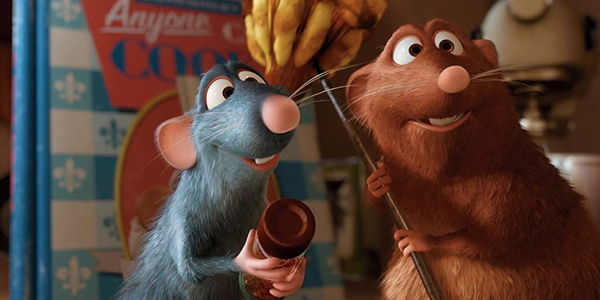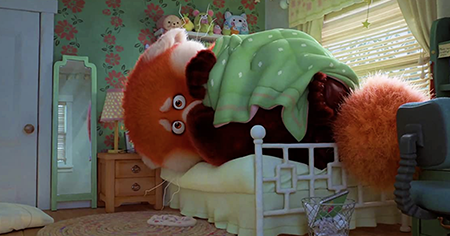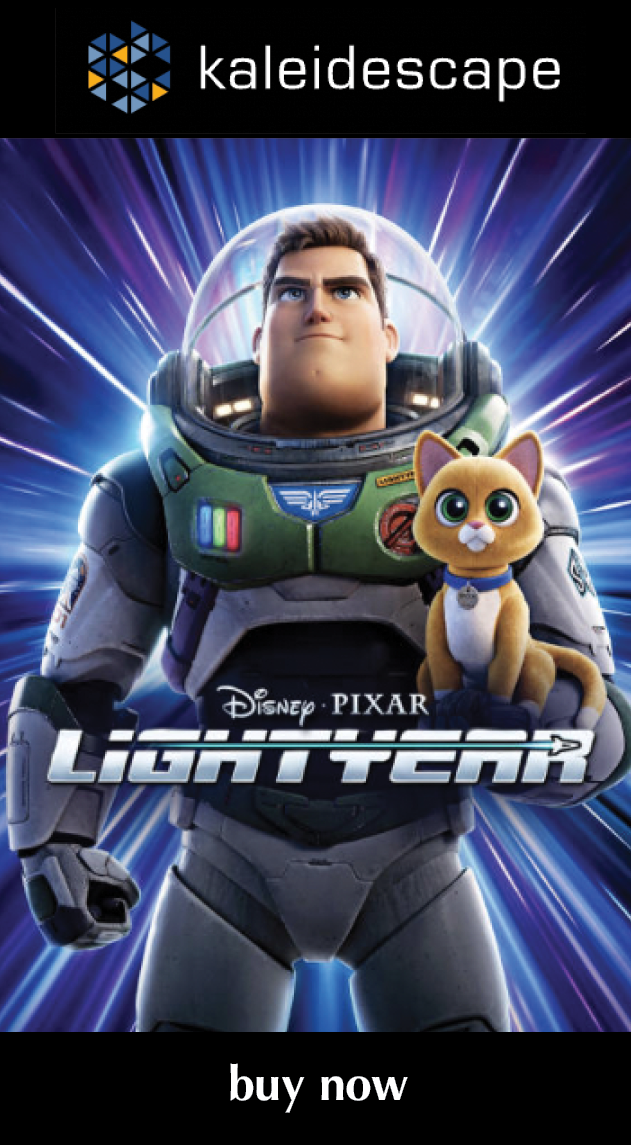
review | Lightyear
Although it’s got a distinct straight-to-streaming feel, the latest Pixar offering does raise the bar on photorealistic animation
by John Sciacca
August 6, 2022
Pixar Animation changed the world of filmmaking in 1995 when it released Toy Story, making it the first entirely computer-animated feature film, and creating a new frontier for storytellers to explore. Beyond that, they proved that animation didn’t have to be a forum reserved for kids’ movies. Through rich storytelling, character development, smart humor, and broad themes that transcend ages, Pixar showed that animated movies could be enjoyed by kids and adults alike.
Since then, we’ve seen three followups in the Toy Story franchise, with the most recent, Toy Story 4, released back in 2019. And along with watching these beloved characters grow, evolve, and change, we’ve also witnessed continual improvements in the quality and detail of Pixar’s animation, which we can appreciate now more than ever with modern 4K HDR displays.
While Toy Story 4 was kind of a sendoff and farewell of sorts to Woody, with Lightyear, Pixar gives Buzz a spinoff of his own with a bit of an origin story. As the opening titles proclaim:
In 1995, a boy named Andy got a Buzz Lightyear toy for his birthday.
It was from his favorite movie.
This is that movie.
So, don’t expect any of Woody’s roundup gang here as this is a completely separate animal about the character Buzz Lightyear, not the toy Buzz Lightyear based on that character. (Kind of like if we had been watching a movie called Skywalker Saga for years where a boy played with his Kenner Star Wars action figures, and now we are seeing Star Wars about the actual Luke Skywalker. Make sense?)
This is also why we don’t have Tim Allen returning to voice Buzz, rather having him voiced by Chris Evans, who sounded more like George Clooney to me. According to Lightyear producer Galyn Susman, “Tim Allen is Buzz Lightyear the toy, and he’s the embodiment of Buzz Lightyear the toy. We weren’t making a Toy Story movie. We’re making Buzz Lightyear’s movie, the Lightyear movie. And so first and foremost, we just needed to have a different person playing that Lightyear, separate from the toy.”
More than anything else, Lightyear is a sci-fi adventure that takes place on an uncharted planet 4.2 million light years from earth that just happens to star a version of a character we’ve become pretty familiar with over the past 27 years. There are scenes, designs, and moments that are reminiscent of Wall-E, Star Trek, Starship Troopers, Star Wars, 2001, Alien, and more.
While it is a wholly different kind of movie, you can expect Buzz’s familiar gadget-laden spacesuit, and callbacks to some of his popular Toy Story catchphrases and quirks like “To infinity and beyond” and “Buzz Lightyear to Star Command, come in, Star Command.” Or, you know, the kinds of things that would make a Buzz Lightyear toy really cool and fun to play with.
After landing on an uncharted planet, Space Ranger Captain Buzz Lightyear and commanding officer/best friend Alisha Hawthorne (Uzo Aduba) begin exploring, only to discover the planet is filled with hostile vegetation and lifeforms. After damaging their ship during retreat, the crew is forced to stay on the planet while performing repairs and while also trying to develop the formula for the crystallic fusion fuel necessary for hyper-speed travel so they can leave the planet.
While testing the fuel, Buzz discovers he is gone one year for every minute of space travel, meaning the lives of his friends back on the planet blink past in time-lapse moments with each subsequent test. After many years of failed testing, a new formula has Buzz returning after 22 years have passed, during which time the planet has been invaded and overrun by robots, and Buzz must work with a new team to try and take back the planet.
Lightyear gives Pixar a chance to introduce us to a new set of characters, including Mo Morrison (voiced by Taika Waititi), a clumsy, accident-prone member of Buzz’s new crew, and SOX (voiced by Peter Sohn), an emotional-support robot cat given to Buzz to help him cope with being alone after so much time away, which I found to the most entertaining and humorous character.
Visually, Lightyear is stunning and continues Pixar’s tradition of raising the bar of what is possible with computer animation. While the studio has kind of settled on a look for human characters, the remaining visuals of backgrounds, ships, textures, and clothing can be near photorealistic. When you remember that every pixel up on screen was deliberately drawn/shaded/rendered/lit by a digital artist, it is even that much more stunning to appreciate all the fine details that are visible.
Instead of a glossy and shiny digital look, there is an almost film-like grittiness or softness to some of the images. (Remember, according to the opening, this movie happened back in 1995 . . .) But this gives the film a more cinematic look. Color is also used to define different environments, with the planet exterior shots having a rusty color palette by day and a blue-ish purple by night, with interiors of the space port and ships leaning grey and blue.
Taken from a 4K digital intermediate, there is incredible detail in every frame. Look at the thick metallic texture and detail on the space suits, with bits of wear and scratches, or the flaking and pebbling in the paint or the texture on buttons in the space ships or the scape and scale of some of the colony facilities or the massive external shots of spaceships.
The visuals also greatly benefit from the HDR grade, giving us not only true, inky blacks but also with many scenes producing bright, often eye-searing, visuals. Whether it’s red-hot balls of stars, the glowing streaks of hyper-speed travel, fire-orange sparks and flames, gleaming blue-white lights, raging red robot eyes, or probing lights in dark nights or interior corridors, Lightyear pops off the screen in HDR.
The Dolby TrueHD Atmos audio mix on the Kaleidescape download is one of the biggest arguments for buying Lightyear over just streaming it on Disney+. Right from the get-go, you experience big, furniture-rumbling bass, with the big spacecraft engines letting you feel their massive power or loud cracks and groans as things collide. The sound mixers also use the sound to establish different environments, like the really expansive nature of the planet’s soundscape and atmosphere, letting you hear the subtleness of the large, open outdoor space or the spacious, echoing sounds in the large hanger bays or the heavy whirr and whine of machinery as big launch doors open up. There are also plenty of moments with creatures and ships flying about overhead or high up on the front walls.
Any time you’re dealing with time travel, the plot can get a bit shifty and complex, and there are a lot of scary-ish scenes that might be a bit much for a younger audience. (My six year old took a pass.) While it was generally entertaining, the plot and whole of Lightyear just feels a little thin, and doesn’t really tread any new ground or give us any real insight into the Buzz Lightyear character we’ve grown to love, or produce the heart and feels Pixar usually delivers. Honestly, it feels a bit more like a straight-to-streaming film rather than the latest big feature in Pixar’s canon. Which is probably why it is the lowest-rated Pixar film that doesn’t have the word Cars in its title.
For me, a Pixar movie is as much about the technical merit and evolution of computer animation, and for that reason alone Lightyear deserves a watch. Whether you’ll want to go back and visit it a second time remains the question.
Probably the most experienced writer on custom installation in the industry, John Sciacca is co-owner of Custom Theater & Audio in Murrells Inlet, South Carolina, & is known for his writing for such publications as Residential Systems and Sound & Vision. Follow him on Twitter at @SciaccaTweets and at johnsciacca.com.
PICTURE | Lightyear continues Pixar’s tradition of raising the bar of what is possible with computer animation, displaying incredible detail in every frame and with the whole greatly benefitting from the HDR grade
SOUND |The TrueHD Atmos mix on the Kaleidescape download is one of the biggest arguments for buying Lightyear over just streaming it on Disney+
© 2025 Cineluxe LLC






